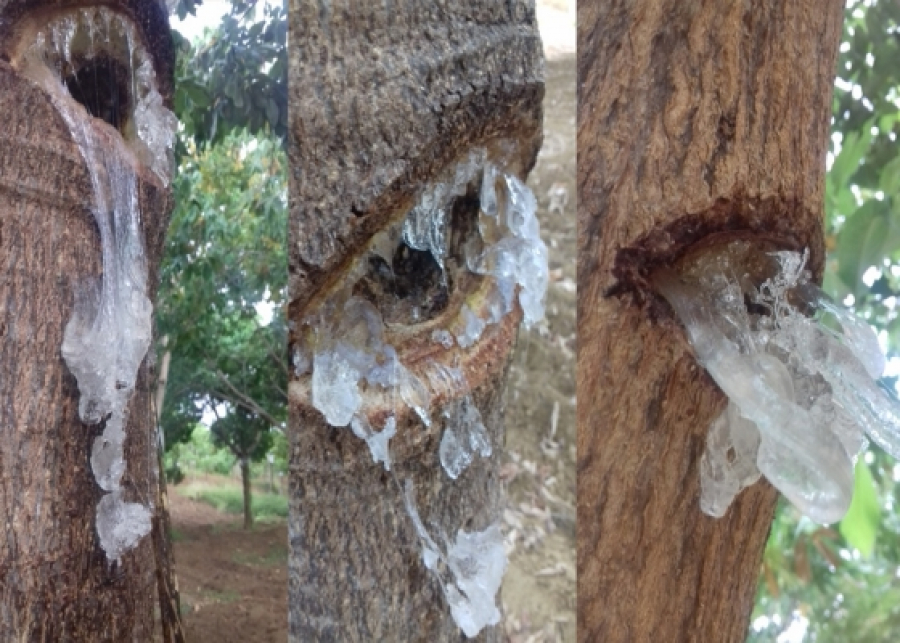The price of Tragacanth gum (locally called Saekalamat) hit up to K45,000 per viss and plummeted to K9,000 per viss in the domestic market amid a lack of foreign demand.
When the prices of pulses such as peanut, sesame, black gram, pigeon pea and green gram hit record highs this year on the back of strong foreign demand, tamarind and Tragacanth Gum markets are bracing for price slump owing to a lack of foreign demand. Those engaged in tamarind businesses have been struggling with the price drop for years.
Similarly, Talmakhana Seeds (Hygrophila phlomoides), which is a lucrative herb found in coastal areas and delta regions, also fetched a high price before 2020. Then, the price declined, said a seller of herbs.
The prices stood at K5,000 per viss of Talmakhana Seeds and K7,000 per viss of Tragacanth Gum on 14 August, a herb seller from Bayintnaung wholesale market shared price information.
Chinese buyers pushed up the prices of Talmakhana Seeds to K20,000 per viss in 2020.
After soaking the gum in water, the sellers of beverages make a drink out of it when it becomes fluffy. That has many health benefits including improving urinary function so the consumption is high in summer.
Tragacanth Gum is naturally found in the mountain regions, commonly in Magway, Mandalay and Sagaing regions. About 160 trees can be grown per acre, with a yield rate of 1 viss of gum per tree each season. It is harvested around September-October. The wage per worker to collect the gum is K4,000 for the morning shift. For preserving trees, a person is hired at K400,000 per month.
Earlier, China, Thailand, India and Malaysia purchased Myanmar’s Tragacanth Gum to utilize in making cosmetics and traditional medicines as well as in the food industry. At present, lack of foreign demand brings down the prices in the domestic market. — TWA/EM
Decreased foreign demand leads to a drop in Tragacanth gum prices
- August 17, 2023
- 323















